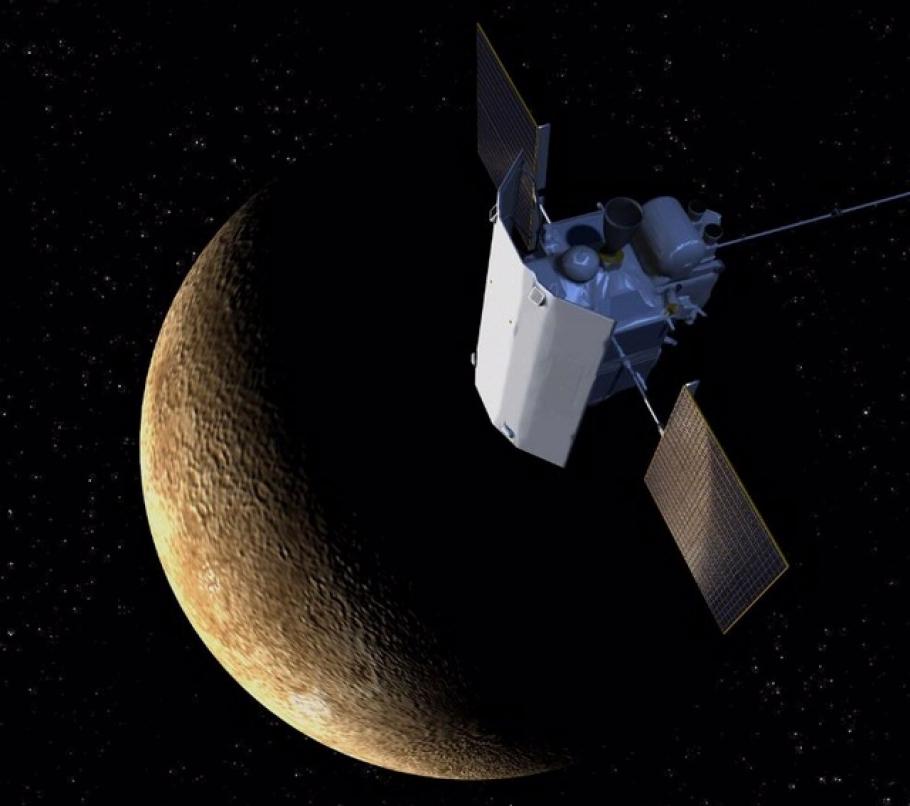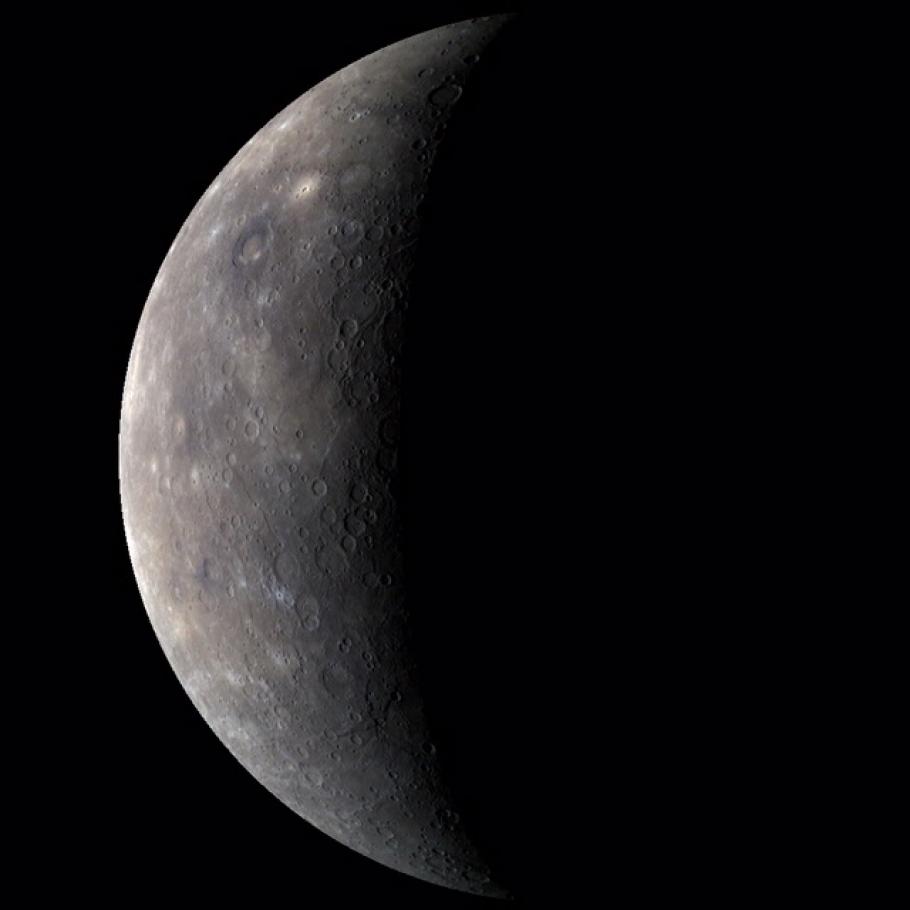On March 18, 2011, at 8:45 pm EDT, MESSENGER became the first spacecraft ever to enter Mercury's orbit. With MESSENGER on the last leg of its journey, I’m reminded how long it has taken to get there. I watched the spacecraft launch in the early morning hours of August 3, 2004, almost six and a half years ago. Now after one flyby of Earth, two flybys of Venus, and three flybys of Mercury, the spacecraft caught up with Mercury again, but this time it was captured by the planet. You might think as one of our closest neighbors in the Solar System it would take a lot less time to get into Mercury orbit—because Mercury is the closest planet to the Sun, at a distance where the influence of the Sun’s gravity is much greater, it is a challenge to reach and orbit.
In its three flybys of Mercury, MESSENGER imaged much of the planet’s surface. As great as the flyby images are, they vary greatly in resolution and in lighting geometry. In orbit, MESSENGER can map the entire surface of Mercury at high resolution and with even lighting. These first images obtained from orbit will revolutionize our understanding of Mercury. I will be eagerly examining the new images for evidence of fault scarps, landforms created by the shrinking of Mercury’s crust causing it to break and form cliffs. These cliffs tell us that Mercury’s interior has cooled and the entire planet has contracted. With a new global view of Mercury, we can map all the fault scarps and estimate just how much the planet has contracted over time. It’s an exciting time for the exploration of Mercury!
As MESSENGER approached Mercury for the mission's third and final flyby of the solar system's innermost planet, the WAC acquired images through all 11 of its narrow-band color filters. The 1,000, 700, and 430 nanometer filters were combined in red, green, and blue to create this color image, the last close-up color view that was acquired before MESSENGER went into orbit around Mercury in March of 2011. Only 6 percent of Mercury's surface in this image had not been viewed previously by spacecraft, and most of the measurements made by MESSENGER's other instruments during this flyby were made prior to closest approach. The observations from MESSENGER's third flyby of Mercury nonetheless revealed fresh surprises.


